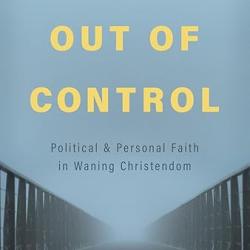Why Is It So Difficult to Get Reliable Information about the COVID-19 Virus Pandemic?

I am not a scientist; I am an ethicist. My question is why is it so difficult to get reliable information about the COVID-19 pandemic? Why is there so much confusion, so many contradictory claims, and so little clarity? I might even ask why there is more heat than light over this pandemic?
The reason I ask is not only curiosity and my innate desire to know and understand as much as possible—about the world around me. I also ask because I believe lives depend on good, reliable information.
Ever since February when I was in Seattle for a conference, I have been deeply curious about this disease and pandemic. I first heard about it then and there. One day the famous Pike Place Market just blocks from my hotel was bustling with people. Two days later it was almost deserted.
I have read literally scores of articles about the disease in reliable sources including this newspaper. I have searched the world wide web for good information about it and focused my attention solely on reliable sources. (As a researcher I am pretty good at distinguishing reliable sources from others.) I have watched much news programming on television.
What I have not found dismays me. I have not found widely available, reliable information—especially about the IFR (infection fatality rate) of this disease. That is one statistic that most people would like to have. I understand the reasons for the scarcity of that information. It takes time and vigorous, even aggressive research.
But I finally came across a very interesting, even revealing statistic out of Germany. And I wonder why it is not being broadcast more widely. I realize and understand that it cannot be applied equally to every population everywhere, but it seems to be the most reliable statistic emerging so far. I think it deserves more attention in the American media.
The statistic is published by the University of Bonn in Germany. The study is called (in English) The Heinsberg Study even though the town that was studied is called Gangelt (a town within the “county” of Heinsberg). Anyone can go to the internet, use a search engine, and find reports of the study and its results.
The researchers are highly qualified academics from the Institute for Virology at the University of Bonn. Their research is published in a highly regarded, peer-reviewed journal.
The “backstory” is this: the town of Gangelt held a “carnival” just before Lent. In Germany the day is called Fasching; in the U.S. it would be called Mardi Gras. It is perhaps the one day of the year when Germans really let their hair down and go all out being sociable. (I know because I lived in Germany in the 1980s and observed it up close.)
After the carnival Gangelt experienced an outbreak of COVID-19 infection and illness. Six weeks after the carnival the University of Bonn researchers swooped in and began conducting research to discover, if possible, the IFR of COVID-19. Using WHO protocols, they studied 919 individuals using two tests—one for the virus itself and one for the antibody (PCR and ELSIA). They did not want to know the CFR (case fatality rate) but the much more interesting infection fatality rate (IFR).
They found that fifteen percent of the population was infected. They discovered that almost twenty-two percent of people infected were asymptomatic. They found that the IFR was 0.37% — that projecting outward to a hypothetical population of one thousand infected people only 3.7 would die of it. The extremely low IFR is good news; the extremely high percentage of people infected including twenty-two percent who were asymptomatic, is bad news.
But my point is that this study and its results constitute real news—as contrasted with the highly confusing, often extremely “soft” “news” being put out to the American people by various sources. Over the past several weeks I have made a point of watching prime time news shows by all the major networks. Most of what I have seen hardly counts as real news. It is not informative; it contains anecdotal, human interest stories, and conjecture. Most of it focuses on things like protests, government officials’ wearing masks or not wearing masks, etc. What I want and what we need is hard facts—such as comes out of the Heinsberg Study.
Is the Heinsberg Study incontrovertible? Possibly not. Is it applicable to all localities and populations everywhere? Possibly not. But does it deliver hard facts that are really informative (however open to revision)? Yes. Why has it not been reported more widely? Why have similar studies conducted by scientific researchers not been reported more widely? Why is the “news” not filled with statistics rather than images, sound bites, “stories” about who wears a mask in the White House and who doesn’t? These pale in comparison with facts that we need to navigate this pandemic.
*Note: This is not a discussion board; I moderate the discussion of each blog post and eliminate all that are inappropriate. I do not speak for anyone but myself. If you choose to respond be civil and kind, do NOT include any hyperlinks or images, and keep your response on point and brief.












